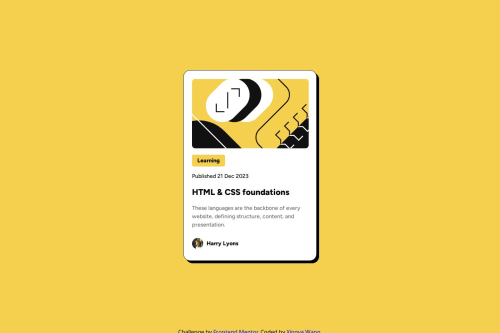
Solution retrospective
I gained a lot more experience working with flexbox. I think next time I will be able to consult external resources less when I am writing code.
What challenges did you encounter, and how did you overcome them?I was having trouble using flexbox to align the items. So I paused the project and read more on CSS introductory guides for flexbox.
What specific areas of your project would you like help with?Welcome any suggestions on more natural CSS styling pattern/template.
Please log in to post a comment
Log in with GitHubCommunity feedback
- P@mkerr-github
"Welcome any suggestions on more natural CSS styling pattern/template."
✅ Good Things:
Clean use of Flexbox for layout.
Consistent spacing and card styling.
Custom fonts clearly applied.
🔧 Key Suggestions:
Font Management: Avoid separate font-family names like "Figtree-ExtraBold" and "Figtree-Medium". Use a single font-family ("Figtree") and control weight with font-weight: 800 or 500.
Use CSS Variables: Declare colours (like rgb(244, 208, 78), grey, black) as variables under :root for consistency and easier updates.
Reduce Redundancy: Instead of repeating styles across h1, h2, p, group shared properties (like line-height, letter-spacing) in a base typography class or apply them to body.
Box-sizing Best Practice: Apply box-sizing: border-box; globally via:
*, *::before, *::after { box-sizing: border-box; }If you found anything in this comment helpful, please remember to click the "mark as helpful" button. Thank you!
Keep up the good work, and keep going! 👋
Marked as helpful - @linus-21
its good
Join our Discord community
Join thousands of Frontend Mentor community members taking the challenges, sharing resources, helping each other, and chatting about all things front-end!
Join our Discord